

Body fat starts off as blood glucose.
Controlling your blood sugar levels will lead you to controlling your weight.
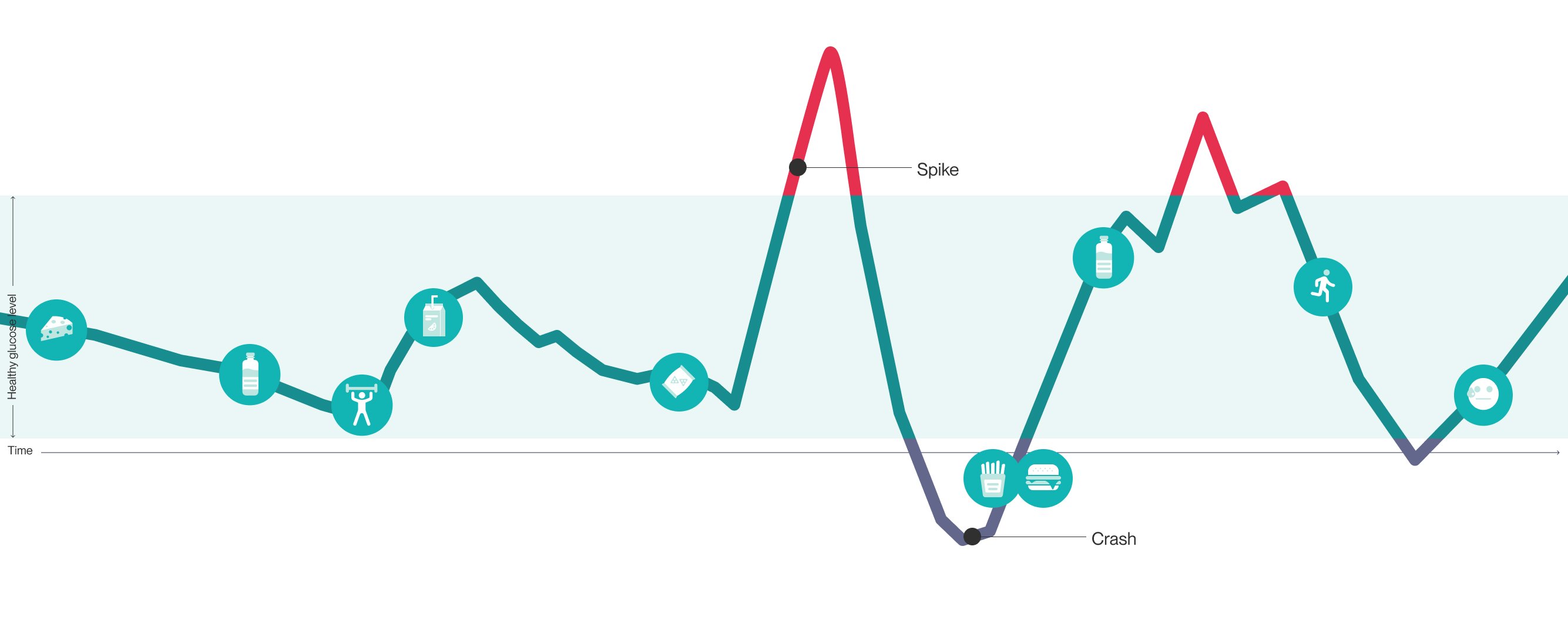
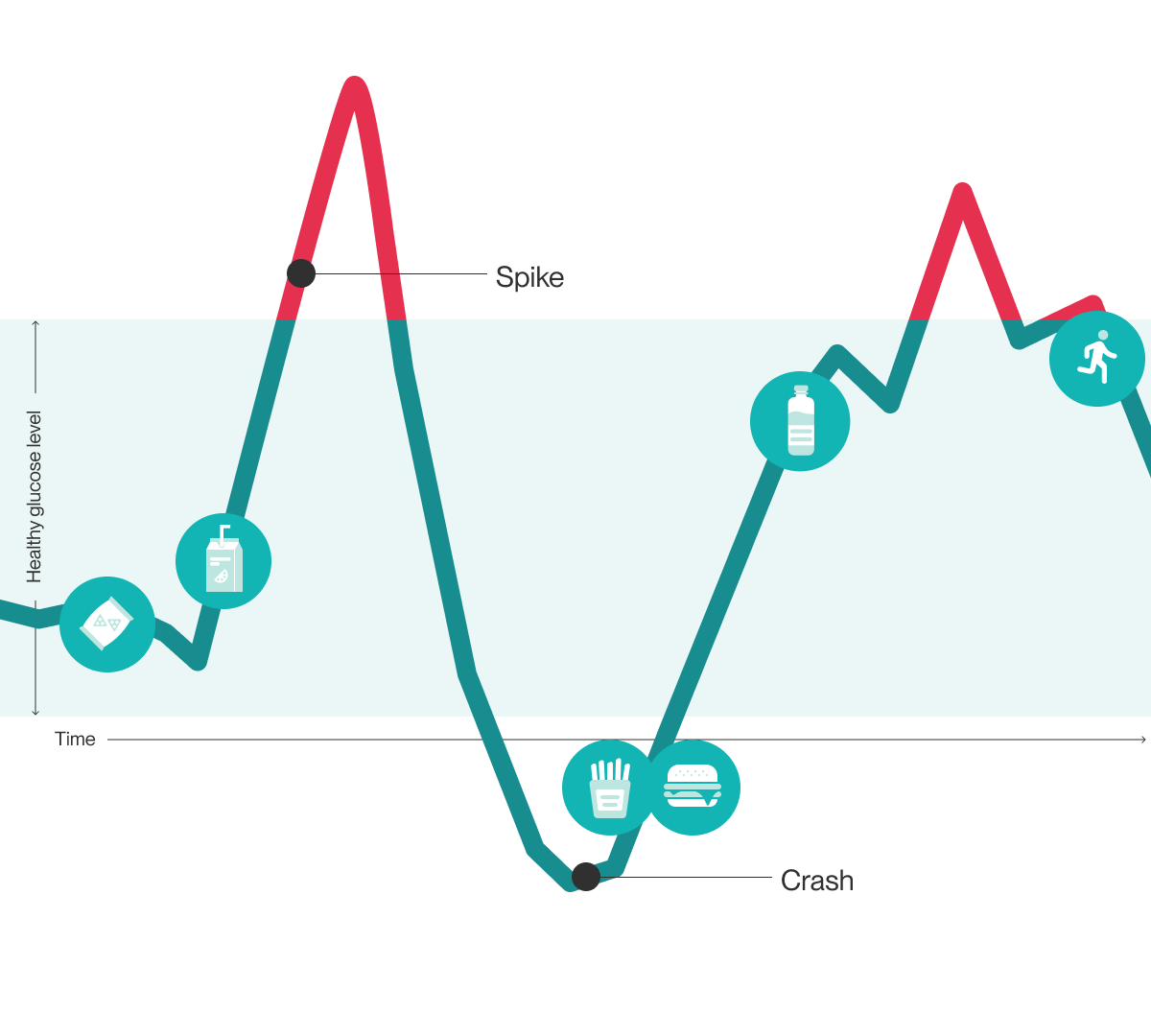
Managing energy determines your weight – but not the way you've been told...
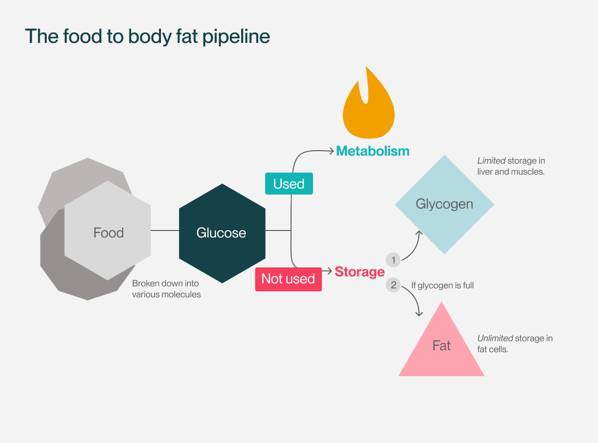
You are powered by glucose
After you eat, your body breaks food down and absorbs everything it can for fuel, repair and growth.
Your circulation directs fuel – glucose – where it’s needed in your blood.
If it's not immediately used for energy, the excess is stored:
1. As glycogen in the liver and muscles – limited storage.
2. As fat in fat cells distributed across the body – unlimited storage.
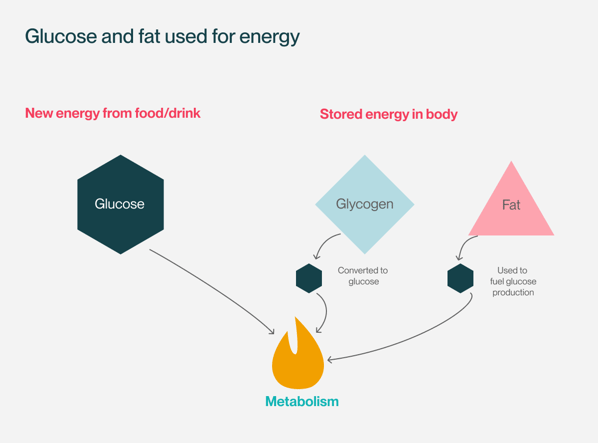
'Fat burning' is actually about glucose too
After your body uses readily available glucose, it converts glycogen back to glucose.
When that's depleted, your body uses fat from fat cells to fuel the creation of glucose.
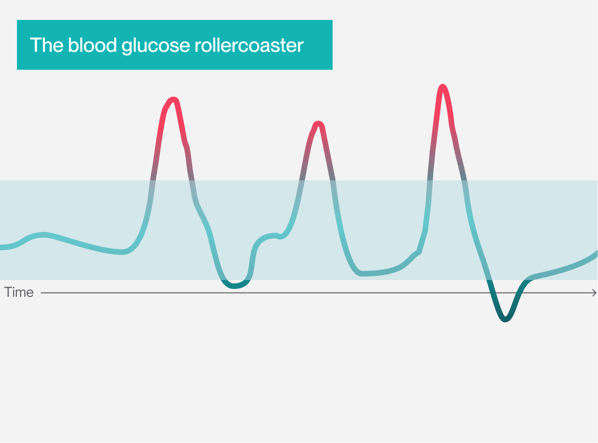
Our idea of normal is extremes – spikes and crashes
Most people’s diets create a day that looks like this, with large spikes and crashes. These are stressors you body has to deal with. The graph represents your energy through the day.
The body strives to regulate your blood glucose in a narrow zone.
4-5 grams is all the glucose you have in your circulation – that's about a teaspoon of sugar in your entire circulation.
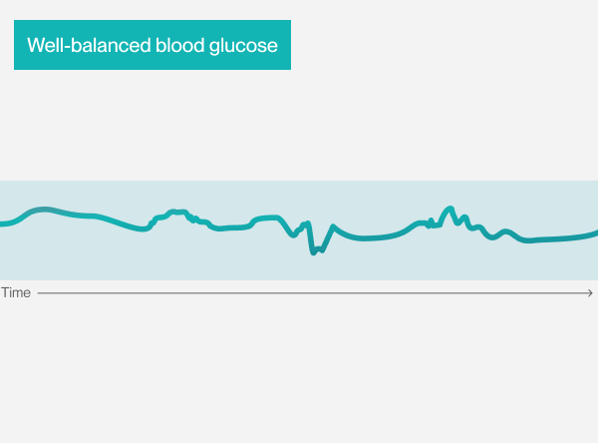
Ideal: A smooth line
Here is what an ‘ideal’ blood glucose day looks like – no spikes, no crashes.
Spikes come from having too much energy coming into your blood too quickly from the things you choose to eat and drink.
The great news is that you can move from the spikes and crashes to a smooth line in a day. It's a matter of understanding and making the right choices for your body throughout the day.
Continuous spikes over time eventually lead you to put on weight as stored fat and affect your metabolic health.
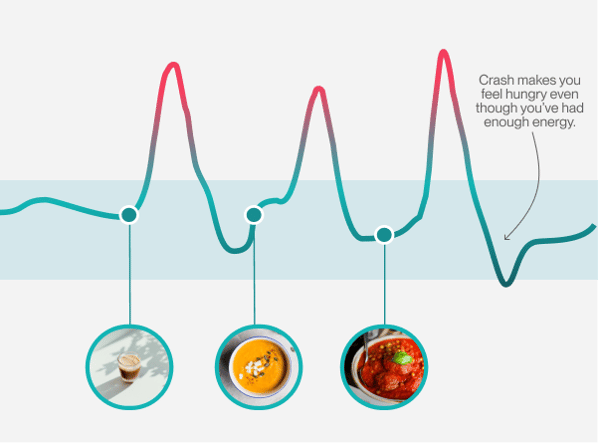
Blood glucose affects your appetite
Your blood sugar status determines what you perceive as hunger and satiation. These are overlayed with reward mechanisms that drive us to perpetuate habits.
Actual hunger and satiety can be drowned out by the powerful dopamine reward systems that are an intrinsic part of our highly evolved survival mechanisms. You know how you can always make room for pudding after you've eaten a huge meal?
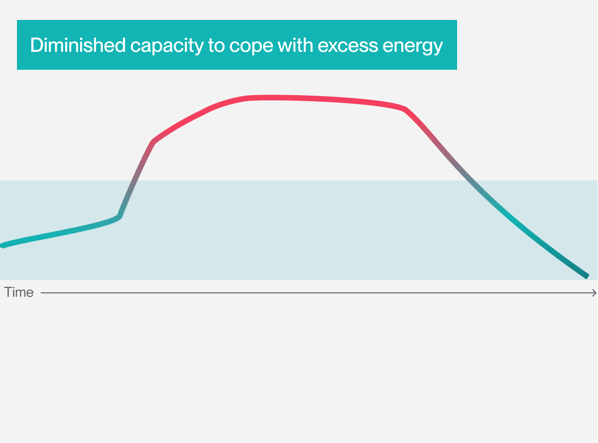
Long term spikes and crashes wear your system out
Your body’s ability to deal with stored energy diminishes if you don’t regularly use the excess energy it stores. Surprisingly, it’s much easier for the body to use this energy than it is to store it.
While spikes can be seen as a normal reaction to energy increases, diminished capacity – onset metabolic syndrome – leads to spikes becoming plateaus.
Over time, you can become desensitised to insulin and intolerant to glucose.
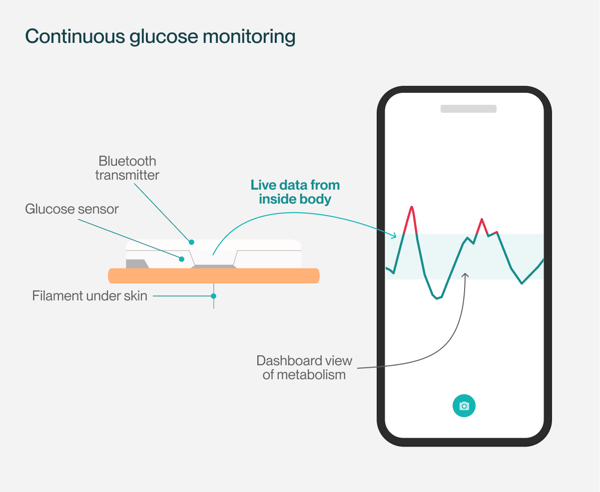
A mystery no more
Today, we can get a live view of our blood glucose.
A continuous glucose monitor sticks to your skin and uses a tiny filament to measure your glucose levels.
It then transmits this via Bluetooth to your smartphone.
When you look at your live blood glucose level, you're seeing a measure of your body's energy system. It's not only affected by food, drink and exercise but by the constant variables of life.
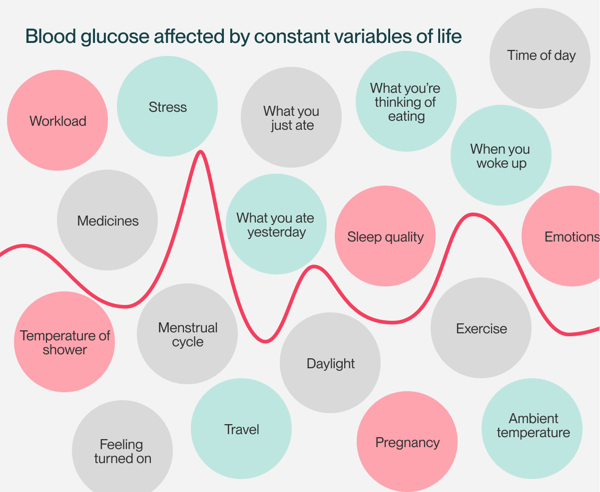
Constant variables affect energy
Monitoring your glucose is pointless if you don't know what to do with the data.
You wake up every day with a brand new set of metabolic variables. You could be tired, thirsty, wide awake, stressed, joyful. Every single one of these factors will determine your energy status.
This in turn affects how your body digests, absorbs and assimilates your food.
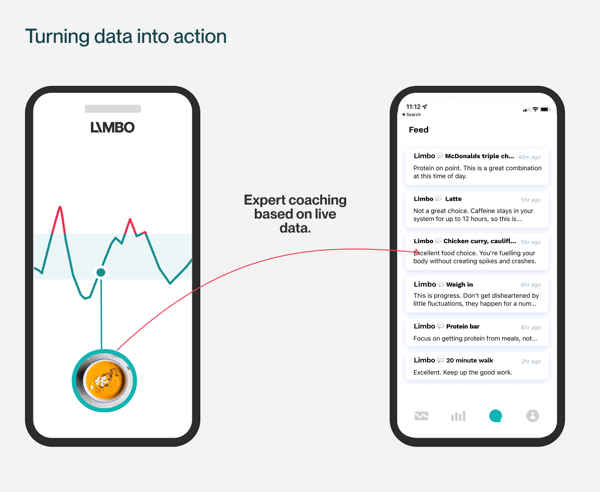
Understand and change
Losing weight isn't about how you look, it's about:
- improving your quality of life
- reducing the risk of getting seriously ill
- giving yourself the chance to extend your lifespan.
You need to understand what's going on so you can make lasting changes to your physiology and habits.
To learn how we apply this science in a practical programme that tells you what to do, see how Limbo works.